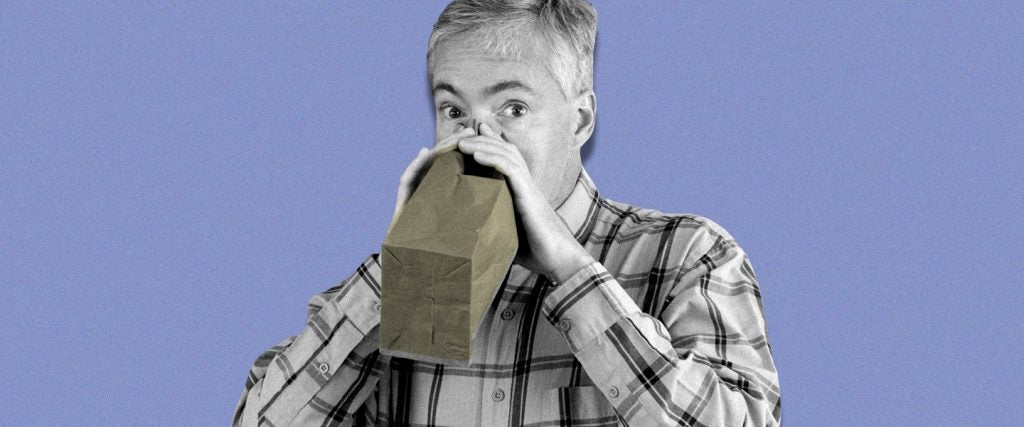When Brett Newski was a kid, he would wake up in the middle of the night, worried he forgot his homework, and run downstairs to check his backpack. It would take him a couple of decades to learn that what he was feeling was anxiety. But now, whenever the 35-year-old guitarist and songwriter — who has performed with bands like the Violent Femmes and the Pixies — gets anxious, he has a specific way of dealing with it: art projects.
More specifically, he draws and paints to get out of his head. A few years ago, he started doodling more directly about his anxiety and occasional bouts of depression, which would eventually turn into It’s Hard to Be a Person: Defeating Anxiety, Surviving the World and Having More Fun, his new book featuring funny illustrations, observations and pieces of wisdom about his own mental-health struggles.
The mental-health musings in the book are meant to be read alongside a soundtrack of eight original songs that Newski wrote from his high school lyrical notebooks. It was when he was going through these notebooks that it became clear to Newski that he often uses his creativity to cope with his anxiety and occasional depression. “I try to channel that into some sort of creative fuel because when you feel shitty or down, you want to be proactive about it,” he tells me. He also believes that being proactive about creativity likely contributed to his artistic success.
Newski’s process of using anxiety as fuel is a very practical way of coping — and one that’s proven helpful for others, too. “We often think of anxiety as something to be avoided or a problem to be solved. But anxiety isn’t 100 percent bad,” psychotherapist Jessica Tappana explains, noting that numerous successful athletes and executives who have struggled with anxiety have channeled it into their performance. “Anxiety in small doses leads us to act in ways that are often very helpful.”
Generally, Tappana believes that those who have had to confront their anxiety have learned to be more resilient as a result. “One of the most effective ways to treat anxiety is to face those very things that trigger it,” Tappana says. Regularly confronting and managing your anxiety, then, can also help you become more adept at facing your fears and performing under challenging circumstances. “Once you move through that and find that you’re now able to handle those past anxiety triggers, it’s possible to feel more confident facing fears in other areas of your life,” she continues.
To Tappana, the key to channeling anxiety is having a support system and coping skills in place. So before welcoming anxiety with open arms, she suggests trying some mindfulness practices the next time you’re anxious, like splashing cold water on your face, eating something sour or using a cognitive behavioral therapy worksheet.
While working on his book, Newski once again had to get creative to try to stay sane. So when he hit a writing (or doodling) wall or felt his anxiety creeping up, he’d get on the floor to stretch, take a sauna at his gym or play a pickup game of basketball. Today, as the world continues to open back up, Newski says he’s more anxious than ever, especially as he thinks about going back on tour. “It’s weird. Every year I feel like you get a little better at dealing with stuff like this,” Newski says. “But at the same time, life is so crazy and there’s more obstacles and struggles that come, and it’s just easy to get goofed up as a person.”
At the very least, every new anxiety presents an opportunity to find a new way to bounce back. And with all that bouncing back again and again, eventually you’ll find yourself well-prepared for whatever life throws at you next.

